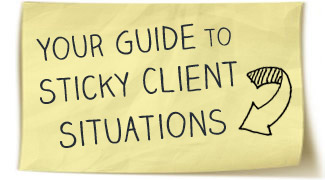As a small business owner, you probably have or plan to have a website and corresponding social media accounts. However, I can bet a good portion of you are scared to death by the topic of search engine optimization. Maybe it scares you so bad that you chose not to implement it, or maybe you are planning to hire someone to help you implement it. Either way, I’m here to tell you that there are some basic SEO steps that you can follow on your own, without succumbing to the SEO monster or dishing out more cash than you’ll make in the first year of running your business.
Here are some steps you need to take to maximize SEO for your small business website:
Step 1: Identify Your Key Phrases
Though you’ve probably heard the term before, key phrases are the heart of SEO. Key phrases are what a customer is typing into any given search engine when seeking a specific product, service, information or entertainment.
Do you know what your key words are? It not, you need to figure it out. For most small businesses, key phrases will be more limited than those of a larger corporation. For example, if you own an online pet store that sells organic supplies, your key words would be along the lines of “organic dog food” or “organic cat toys.” Identifying your key words has to do with putting yourself in the shoes of your customers, and imagine what terms they’re searching with when looking for a solution that you offer.
Here are some tips:
- Use Google’s AdWords key word tool to identify terms
- Long-tail keywords work better for small businesses than short key words (“used platinum necklace” versus “platinum jewelry”)
- Specific key words work better for small businesses than general key words (“black and white bedspread” versus “bedspread”.
- Think how your audience thinks (“shock-resistant running shoes” versus “athletic shoes”)
- Here are more tips on selecting keywords from Google
Step 2: Optimize:
Now that you’ve identified your key phrases, you’re ready to create or revamp your web page. Below are the five main areas of your page that you need to focus on. Then, once your pages are updated, you can check to make sure Google is accurately interpreting your page by visiting the Content Keywords page. This page will show you the most significant key words on your site.
- Title tags: The title tag is the blue, underlined header above a result in a search engine. SEOmoz recommends using the most important keyword for each page in the title tag at least once and keeping it in the beginning of the tag.
- Page: You should have a set number of keywords for each page of your website. Aim to put keywords once at the top of your page and then a few times throughout the copy. It’s also a good idea to use variations of keywords as well as synonyms. The important thing is to create natural, useful copy without overstuffing with keywords.
- URL: It’s also important to use keywords in your URL’s. But again, don’t “keyword-stuff” and do use them in logical order.
- Anchor text: Anchor text is the text that hyperlinks out to other areas of the internet. Though you shouldn’t put key words here unless it makes sense, when selecting anchor text you need to make sure that it accurately describes what you’re linking to. For example, “Twitter has made some changes that you should take a look at (the words hyperlinked are the anchor text that points to an article on that topic.
Step 3: Verify Your Site
Google recommends verifying your site in its SEO for Startups guide. Though this doesn’t directly affect page ranking, according to Google, doing so will give you certain valuable privileges, such as viewing Google data for your site, improving quality, having the option to communicate with Google with regards to how you would like your site to be indexed and getting direct communication from Google about the health of your site.
You can also ask them to crawl your new page or website, which they recommend rather than the “submit your site” option we discuss below. Verifying your site and having the option to use these tools doesn’t directly affect page ranking, but it can contribute to user experience which in turn, can boost traffic and page ranking.
Step 4: Use a Good Hosting Service
As Google said in its SEO for Startups, the speed of your site is directly correlated to a good user experience. Therefore, invest in reputable hosting service and make sure your page downloads take less than 2 seconds and focus on searchable content rather than a beautifully designed, slow site that cannot be indexed.
Step 5: Additional Steps You Can Take if You Want To Go the Extra Mile
In addition to the steps mentioned above, there are other things you can do to ensure your SEO is on track:
- If you purchased a preexisting domain, do a domain background check to make sure the site was never penalized from search engines due to unethical behavior.
- Check your site’s health.
- Submit your site to Google, Bing, Yahoo and other search engines
- Submit to Google Places.
- Integrate a robust social media presence.
- List your business.
- Build quality links.
SEO may seem like an overly demanding, spine-chilling endeavor for some, but rest assured that by taking these basic steps and reviewing other resources out there like the Beginner’s Guide to SEO and Google’s SEO for Startups, you’ll be climbing the rankings soon enough. But remember this – it takes time to rank on the top pages and you’re not going to do so overnight.
[Top Photo – Free image courtesy of FreeDigitalPhotos.net]






